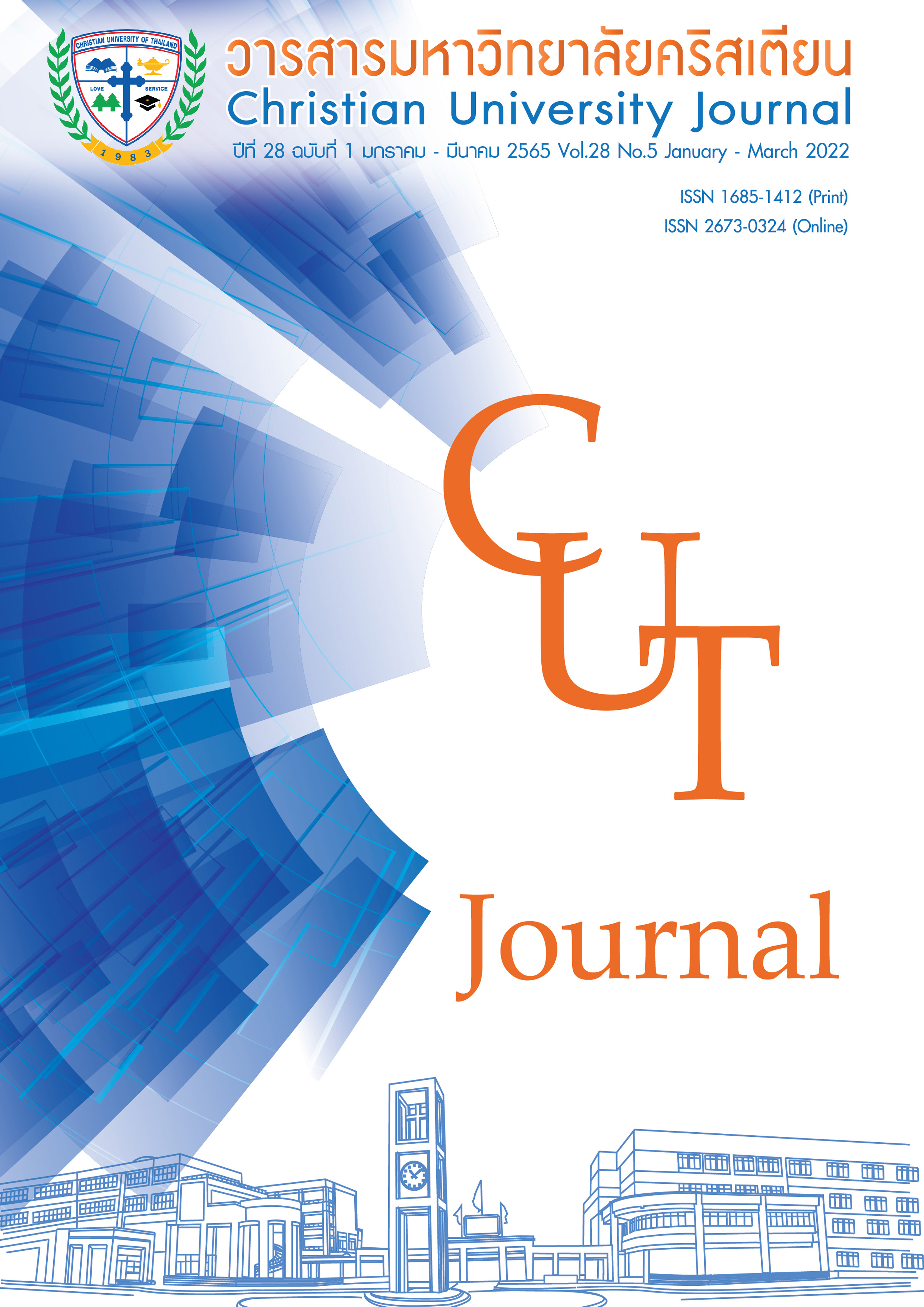ตัวแบบการพัฒนาความสามารถทางการแข่งขันของอุตสาหกรรม อาหารทะเลแปรรูปในประเทศไทย
คำสำคัญ:
ตัวแบบ, ความสามารถทางการแข่งขัน, อุตสาหกรรมอาหารทะเลแปรรูปบทคัดย่อ
การวิจัยเรื่องตัวแบบการพัฒนาความสามารถทางการแข่งขันของอุตสาหกรรมอาหารทะเลแปรรูปในประเทศไทย มีวัตถุประสงค์เพื่อพัฒนาตัวแบบการพัฒนาปัจจัยเชิงสาเหตุที่ส่งผลต่อผลการดำเนินงานของอุตสาหกรรมอาหารทะเลแปรรูปในประเทศไทย เป็นการวิจัยแบบผสมผสาน (Mixed Method) ประกอบไปด้วยการวิจัยเชิงปริมาณ ใช้แบบสอบถามในการเก็บรวบรวมข้อมูลจากผู้ประกอบการอุตสาหกรรมอาหารทะเลแปรรูปในประเทศไทย จำนวน 396 แห่ง โดยการตรวจสอบคุณภาพเครื่องมือด้านความเที่ยงตรงของเนื้อหา และความเชื่อมั่น และใช้วิธีการสัมภาษณ์เชิงลึก (In-depth interview) กับกลุ่มตัวอย่างแบบจำเพาะเจาะจง 21 ราย สำหรับการวิจัยเชิงคุณภาพเพื่อศึกษาปัญหาและแนวทางแก้ปัญหาการพัฒนาตัวแบบการพัฒนาความสามารถทางการแข่งขันของอุตสาหกรรมอาหารทะเลแปรรูปในประเทศไทย และเพื่อนำข้อมูลมายืนยัน สนับสนุนข้อค้นพบจากการวิจัยเชิงปริมาณ โดยการใช้โมเดลสมการโครงสร้าง (Structural Equation Model)
ผลการวิจัยโมเดลความสัมพันธ์เชิงสาเหตุของปัจจัยที่ส่งผลต่อผลการดำเนินงานของอุตสาหกรรมอาหารทะเลแปรรูปในประเทศไทย มีความสอดคล้องกับข้อมูลเชิงประจักษ์ และผลการวิจัยพบว่า 1) ความสามารถทางการแข่งขันมีอิทธิพลทางตรงต่อผลการดำเนินงานขององค์กร 2) ทุนมนุษย์มีอิทธิพลทางตรงต่อผลการดำเนินงานขององค์กร 3) ทุนมนุษย์มีอิทธิพลทางอ้อมต่อผลการดำเนินงานขององค์กร โดยผ่านทางความสามารถทางการแข่งขัน 4) ความสามารถในการปรับตัวมีอิทธิพลทางตรงต่อความสามารถทางการแข่งขันขององค์กร 5) ความสามารถในการปรับตัวมีอิทธิพลทางอ้อมต่อผลการดำเนินงานขององค์กร 6) การมุ่งเน้นความเป็นผู้ประกอบการมีอิทธิพลทางตรงต่อความสามารถทางการแข่งขันขององค์กร และมีอิทธิพลทางอ้อมต่อผลการดำเนินงานขององค์กร
เอกสารอ้างอิง
กัลย์ ปิ่นเกษร. (2560). ตัวชี้วัดทุนมนุษย์ระดับองค์การ. วารสารบัณฑิตศึกษา มหาวิทยาลัยราชภัฏวไลยอลงกรณ์ ในพระบรมราชูปถัมภ์, 11(2), 193-202.
จินตนา บุญบงการ และณัฏฐพันธ์ เขจรนันท์. (2558). การจัดการเชิงกลยุทธ์. กรุงเทพฯ: ซีเอ็ดดูเคชั่น.
ดวงมณี โกมารทัต. (2552). การบริหารต้นทุน. กรุงเทพฯ : ภาควิชาการบัญชี คณะพาณิชยศาสตร์และการบัญชี จุฬาลงกรณ์มหาวิทยาลัย.
ธนาคารออมสิน. (2562). ธุรกิจอาหารทะเลแปรรูป และคลังสินค้าห้องเย็น. สืบค้นจาก http//www.gsb research.or.th
ธีรยุส วัฒนาศุภโชค. (2561). การบริหารเชิงกุลยุทธ์และการแข่งขัน. กรุงเทพฯ : คณะพาณิชยศาสตร์และการบัญชี จุฬาลงกรณ์มหาวิทยาลัย.
ประไพทิพย์ ลือพงษ์. (2555). การพัฒนาทุนมนุษย์ให้มีสมรรถนะความสามารถในการแข่งขัน. วารสารนักบริหาร, 32(4), 103-108.
ประไพพิมพ์ สุธีวสินนท์. (2559). กลยุทธ์การเลือกตัวอย่างสำหรับการวิจัยเชิงคุณภาพ. วารสารปาริชาต, 29(2), 34-45.
พสุ เตชะรินทร์. (2559). Balance Scorecard รู้สึกในการปฎิบัติ. กรุงเทพฯ: โรงพิมพ์แห่งจุฬาลงกรณ์มหาวิทยาลัย.
วิโรจน์ เจษฎาลักษณ์ และภูวนารถ ถาวรศิริ (2558). การดำเนินธุรกิจ และการจัดการโลจิสติกส์ ของผู้ประกอบการธุรกิจดาวเรือง ใน จังหวัดนครปฐม. Veridian E-Journal, Silpakorn University (Humanities, Social Sciences and arts), 9(3), 507-526.
วรีวรรณ เจริญรูป. (2017). ความสัมพันธ์ระหว่างทุนมนุษย์กับผลการดำเนินงานของกิจการ. วารสารปัญญาภิวัฒน์, 9 (3), 43-54.
สมพร ปานยินดี. (2558). ความสัมพันธ์เชิงสาเหตุและผลลัพธ์ของความสามารถในการจัดการความหลากหลาย. กรุงเทพฯ : มหาวิทยาลัยศิลปากร.
ศูนย์วิจัยกสิกรไทย. (2560). ส่งออกอาหารทะเลแปรรูปไทย. สืบค้นจาก http://kasikornbank.com/th/business/sme
Barney, J. (1991). Firm resources and sustainable competitive advantage. Journal of Management, 17(1), 199-120.
Brah and Lim. (2006). The effects of technology and TQM on the performance of logistics companies. International Journal of Physical Distribution & Logistics Management, 36(3), 192.
Briggs, S., & Keogh, W. (1999). Integrating human resource strategy and strategic planning to achieve business excellence. Total Quality Management, 10(4-5), 447-453.
Bryan, D., & Rafferty, M. (2007). Financial derivatives and the theory of money. Economy and society, 36(1), 134-158.
Certo, S. C. (2000). Modern Management. (8th ed). New Jersey: Prentice-Hall, Inc.
Chakravarthy, B. S. (1982). Adaptation: A promising metaphor for strategic management.
Academy of management review, 7(1), 35-44.
Chatterji, A., & Patro, A. (2014). Dynamic capabilities and managing human capital.
Academy of Management Perspectives, 28(4), 395-408.
Chen, P. C. Tsai, J. M., (2012). Analysis of the development strategy of late-entrants in Taiwan and Korea’s TFT-LCD industry. Technology in Society, 34(1), 9-22.
Diamantopoulos, A. & Siguaw, A. D. (2000). Introducing LISREL: A guide for the uninitiated. London: Sage Publications.
Dobrivojevic, G. (2013). Analysis of the competitive environment of tourist destinations aiming at attracting FDI by applying Porter’s Five Forces Model. British Journal of Economics, Management and Trade, 3(4), 359-371.
Drew, S. A. (1997). From knowledge to action: the impact of benchmarking on organizational performance Long range planning. Science Direct, 30(3), 427-441.
Dreyer, B., & Grønhaug, K. (2004). Uncertainty, flexibility, and sustained competitive advantage. Journal of business research, 57(5), 484-494.
Evangelista and Sweeney. (2006) Technology usage in the supply chain. The International Journal of Logistics Management, 17(1), 55-74.
Eisenhardt, K. M. and Martin J. A. (2000). Dynamic Capabilities: What are They Strategic Management Journal, 21(10-11), 1105-1121.
Hair, J. F., Black, W. C., Babin, B. J. & Anderson, R. E. (2010). Multivariate Data Analysis: A global perspective. (7th ed.). Upper Saddle River, NU: Prentice Hall.
Hammant, (1995). Encyclopedia of Information Science and Technology. Logistics Information Management, 8(6), 32-37.
Helfat, C. E. (1997). Know-How and asset complementarity and dynamic capability accumulation: the case of R&D. Strategic Management Journal, 18(5), 339-360.
Khalique, M., Nassir Shaari, J. A., Isa, A. H. B. M., & Ageel, A. (2011). Relationship of intellectual capital with the organizational performance of pharmaceutical companies in Pakistan. Australian Journal of Basic and Applied Sciences, 5(12), 1964-1969.
Kline, R. B. (2011). Convergence of structural equation modeling and multilevel modeling.
Koall, I. (2001). Managing complexity: using ambivalence and contingency to support diversity in organizations. Equality Diversity and Inclusion: An International Journal, 30(7), 572-588.
Lee, J. H. (2018). Empirical Analysis of Asymmetric Cost Behavior (Doctoral dissertation, University of Calgary, Calgary, AB.). Retrieved from http://hdl.handle.net/1880/106541
Lin, H., (2015). How dynamic capabilities affect adoption of management innovation. Journal of Business Research, 69(2), 862-876.
Marimuthu, M., Arokiasamy, L. & Ismail, M. (2009). Human capital development and its impact on firm performance: evidence from developmental economics. The Journal of International Social Research, 2(8), 265-272.
Meyer, H. H., Kay, E., & French, J. R. P. (January 1965). Split Roles in Performance Appraisal. Retrieved from https://hbr.org/1965/01/split-roles-in-performance-appraisal
Miller, D. (1983). The correlates of entrepreneurship in three types of firms. Management Science, 29(7), 770-791.
Porter, (1980). Competitive Strategy. Retrieve from http://citeseerx.ist. psu. edu
Porter, M. E. (1990). New global strategies for competitive advantage. Planning Review, 18(3), 4-14.
Ritchie, Marshal, Eardley. (1998) Functions and responsibilities of marketing auditors in measuring organization performance. International Journal of Technology Management, 25(8), 814-825.
Rindova, V. P. and Kotha, S. (2001). Continuous “Morphing”: Competing through Dynamic Capabilities, Form, and Function. Academy of Management Journal, 44, 1263-1280.
Robbins, S. C. and Coulter, M. (2002). Management. (7thed). New Jersey: Prentice-Hall, nc.
Slater, S., & Narver,J. (1995). Market orientation and the learning organization. Journal of Marketing, 59(3), 63–74.
Teece, D. J. (2007).Explicating Dynamic Capabilities: The Nature and Micro foundations of (Sustainable) Enterprise Performance. Strategic Management Journal, 28(13), 1319-1350.
Tsai, J. M., Cheng, M. J., & Chen, P. C. (2012). Analysis of the development strategy of late-entrants in Taiwan and Korea’s TFT-LCD industry. Technology in Society, 34(1), 9-22.
Wilden, R., & Gudergan, S. P. (2015). The impact of dynamic capabilities on operational marketing and technological capabilities: investigating the role of environmental turbulence. Journal of the Academy of Marketing Science, 43(2), 181-199.
Wernerfelt, B. (1984). A Resource-Based View of the Firm. Strategic Management Journal, 5(2), 171-180.
Wheeler, M. L. (1995). Diversity: Business Rationale and Strategies. Conference Board.
ดาวน์โหลด
เผยแพร่แล้ว
ฉบับ
ประเภทบทความ
สัญญาอนุญาต
ลิขสิทธิ์ (c) 2022 มหาวิทยาลัยคริสเตียน

อนุญาตภายใต้เงื่อนไข Creative Commons Attribution-NonCommercial-NoDerivatives 4.0 International License.



